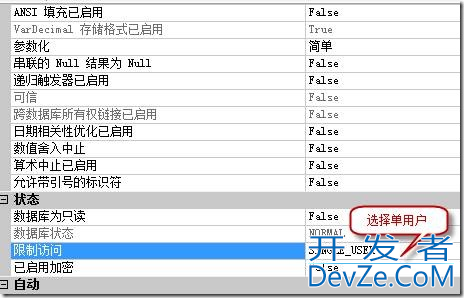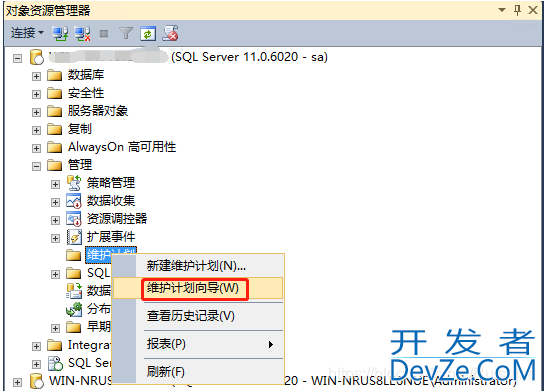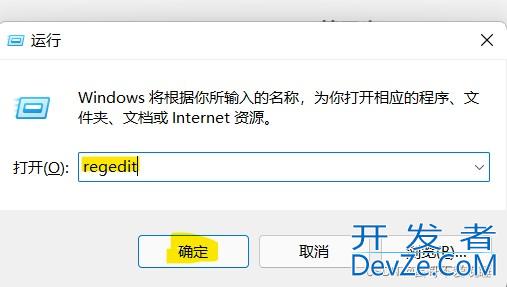Redis集群(cluster模式)搭建过程
目录
- 1、什么是集群
- 2、为什么使用
- 3、集群连接
- 4、Redis cluster 如何分配这六个节点?
- 5、集群搭建
- 总结
1、什么是集群
- Redis 集群(包括很多小集群)实现了对Redis的水平扩容,即启动N个redis节点,将整个数据库分布存储在这N个节点中,每个节点存储总数据的1/N,即一个小集群存储1/N的数据,每个小集群里面维护好自己的1/N的数据。
- Redis 集群通过分区(partition)来提供一定程度的可用性(availability): 即使集群中有一部分节点失效或者无法进行通讯, 集群也可以继续处理命令请求。
- 该模式的redis集群特点是:分治、分片。
2、为什么使用
- 容量不够,redis如何进行扩容?
- 并发写操作, redis如何分摊?
- 另外,主从模式,薪火相传模式,主机宕机,导致ip地址发生变化,应用程序中配置需要修改对应的主机地址、端口等信息。
- 之前通过代理主机来解决,但是redis3.0中提供了解决方案。就是无中心化集群配置。
3、集群连接
- 普通方式登录:可能直接进入读主机,存储数据时,会出现MOVED重定向操作,所以,应该以集群方式登录。
- 集群登录:redis-cli -c -p 6379 采用集群策略连接,设置数据会自动切换到相应的写主机。
4、redis cluster 如何分配这六个节点?
- 一个集群至少要有三个主节点。
- 选项 –cluster-replicas 1 :表示我们希望为集群中的每个主节点创建一个从节点。
- 分配原则尽量保证每个主数据库运行在不同的IP地址,每个从库和主库不在一个IP地址上。
5、集群搭建
1) 通过redis中utils路径下 ./install_server.sh 执行文件创建6个不同的redis节点,端口号分别为6379、6380、6381、8362、6383、6384
2)如果各个节点原本有存储数据,则先将各个节点的数据文件清空。将6个文件夹内的文件全部删除。
清空数据目录。删除 Redis 数据目录下的所有文件。使用命令: rm -rf /path/to/redis/data/*
3)修改6个redis节点的配置文件
在 /etc/redis 文件中,找到每一个端口号对应的配置文件:
例如修改的内容如下:
bind 0.0.0.0 port 6380 # 设置成对应服务专属的端口号 daemonize yes dbfilename "dump6380.rdb" # 设置成对应服务专属的名字 appendonly yes cluster-enabled yes cluster-config-file nodes-6380.conf # 设置成对应服务专属的
4)启动六个节点
[root@bogon src]# ./redis-server /etc/redis/6379.conf [root@bogon src]# ./redis-server /etc/redis/6380.conf [root@bogon src]# ./redis-server /etc/redis/6381.conf [root@bogon src]# ./redis-server /etc/redis/6382.conf [root@bogon src]# ./redis-server /etc/redis/6383.conf [root@bogon src]# ./redis-server /etc/redis/6384.conf
5)查看各个节点是否启动成功
[root@bogon src]# ps -ef | grep redis root 3889 1 0 09:56 ? 00:00:03 ./redis-server 0.0.0.0:6379 [cluster] root 3895 1 0 09:56 ? 00:00:03 ./redis-server 0.0.0.0:6380 [cluster] root 3901 1 0 09:57 ? 00:00:03 ./redis-server 0.0.0.0:6381 [cluster] root 3907 1 0 09:57 ? 00:00:02 ./redis-server *:6382 [cluster] root 3913 1 0 09:57 ? 00:00:02 ./redis-server 0.0.0.0:6383 [cluster] root 3919 1 0 09:57 ? 00:00:02 ./redis-server 0.0.0.0:6384 [cluster] root 4247 2418 0 10:22 pts/0 00:00:00 grep --color=auto redis
6)配置集群
命令格式: --cluster-replicas 1 表示为每个master创建一个slave节点
注意:这里的IP为每个节点所在机器的真实IP
[root@localhost src]# ./redis-cli --cluster create 192.168.177.128:6379 192.168.177.128:6380 192.168.177.128:6381 192.168.177.128:6382 192.168.177.128:6383 192.168.177.128:6384 --cluster-replicas 1 >>> Performing hash slots allocation on 6 nodes... Master[0] -> Slots 0 - 5460 Master[1] -> Slots 5461 - 10922 Master[2] -> Slots 10923 - 16383 Adding replica 192.168.177.128:6383 to 192.168.177.128:6379 Adding replica 192.168.177.128:6384 to 192.168.177.128:6380 Adding replica 192.168.177.128:6382 to 192.168.177.128:6381 >>> Trying to optimize slaves allocation for anti-affinity [WARNING] Some slaves are in the same host as their master M: ae77569d28f01657d9e3e04810e856javascript2abdb3f5dd 192.168.177.128:6379 slots:[0-5460] (5461 slots) master M: 5ccafb9ee2f223c987c740d3d8282f200e4892dd 192.168.177.128:6380 slots:[5461-10922] (5462 slots) master M: dcd5d5066cd9aa5e3f2830ce985395acb978d764 192.168.177.128:6381 slots:[10923-16383] (5461 slots) master S: 8849bb5437931a3fd8510ffa4c0f755f4e26d1eb 192.168.177.128:6382 replicates ae77569d28f01657d9e3e04810e8562abdb3f5dd S: b00800f65775c52519bd6e9f398f916ffe46fed8 192.168.177.128:6383 replicates 5ccafb9ee2f223c987c740d3d8282f200e4892dd S: 6e7a1ae63691267b000363f6528b620a656e03e7 192.168.177.128:6384 replicates dcd5d5066cd9aa5e3f2830ce985395acb978d764 Can I set the编程 above configuration? (type 'yes' to accept): yes >>> Nodes configuration updated >>> Assign a different config epoch to each node >>> Sending CLUSTER MEET messages to join the cluster Waiting for the cluster to join .. >>> Performing Cluster Check (using node 192.168.177.128:6379) M: ae77569d28f01657d9e3e04810e8562abdb3f5dd 192.168.177.128:6379 slots:[0-5460] (5461 slots) master 1 additional replica(s) M: dcd5d5066cd9aa5e3f2830ce985395acb978d764 192.168.177.128:6381 slots:[10923-16383] (5461 slots) master 1 additional replica(s) M: 5ccafb9ee2f223c987c740d3d8282f200e4892dd 192.168.177.128:6380 slots:[5461-10922] (5462 slots) master 1 additional replica(s) S: 8849bb5437931a3fd8510ffa4c0f755f4e26d1eb 192.168.177.128:6382 slots: (0 slots) slave replicates ae77569d28f01657d9e3e04810e8562abdb3f5dd S: b00800f65775c52519bd6e9f398f916ffe46fed8 192.168.177.128:6383 slots: (0 slots) slave replicates 5ccafb9ee2f223c987c740d3d8282f200e4892dd S: 6e7a1ae63691267b000363f6528b620a656e03e7 192.168.177.128:6384 slots: (0 slots) slave replicates dcd5d5066cd9aa5e3f2830ce985395acb978d764 [OK] All nodes agree about slots configuration. >>> Check for open slots... >>> Check slots coverage... [OK] All 16384 slots covered.
7)查看主从关系
命令格式:redis-cli --cluster check 【本台redis自己的IP】:【本台redis自己的端口】
[root@localhosjavascriptt src]# ./redis-cli --cluster check 192.168.177.128:6379 192.168.177.128:6379 (ae77569d...) -> 0 keys | 5461 slots | 1 slaves. 192.168.177.128:6381 (dcd5d506...) -> 0 keys | 5461 slots | 1 slaves. 192.168.177.128:6380 (5ccafb9e...) -> 0 keys | 5462 slots | 1 slaves. [OK] 0 keys in 3 masters. 0.00 keys per slot on average. >>> Performing Cluster Check (using node 192.168.177.128:6379) M: ae77569d28f01657编程客栈d9e3e04810e8562abdb3f5dd 192.168.177.128:6379 slots:[0-5460] (5461 slots) master 1 additional replica(s) M: dcd5d5066cd9aa5e3f2830ce985395acb978d764 192.168.177.128:6381 slots:[10923-16383] (5461 slots) master 1 additional replica(s) M: 5ccafb9ee2f223c987c740d3d8282f200e4892dd 192.168.177.128:6380 slots:[5461-10922] (5462 slots) master 1 additional replica(s) S: 8849bb5437931a3fd8510ffa4c0f755f4e26d1eb 192.168.177.128:6382 slots: (0 slots) slave replicates ae77569d28f01657d9e3e04810e8562abdb3f5dd S: b00800f65775c52519bd6e9f398f916ffe46fed8 192.168.177.128:6383 slots: (0 slots) slave replicates 5ccafb9ee2f223c987c740d3d8282f200e4892dd S: 6e7a1ae63691267b000363f6528b620a656e03e7 192.168.177.128:6384 slots: (0 slots) slave replicates dcd5d5066cd9aa5e3f2830ce985395acb978d764 [OK] All nodes agree about slots configuration. >>> Check for open slots... >>> Check slots coverage... [OK] All 16384 slots covered.
查看下图即可发现,一主对一从:

8) 主节点数据写测试
加参数 -c ,防止路由失效
[root@bogon src]# ./redis-cli -p 6381 -c 127.0.0.1:6381> get name -> Redirected to slot [5798] located at 192.168.109.149:6380 (nil) 192.168.109.149:6380> get name (nil) 192.168.109.149:6380>
9)从节点读数据测试
- 情况:redis cluster集群中slave节点能成功复制master节点数据槽数据,但是无法get数据,显示只能到对应的master节点读取
- 原因:Redis Cluster集群中的从节点,官方默认设置的是不分担读请求的、只作备份和故障转移用,当有请求读向从节点时,会被重定向对应的主节点来处理
- 解决办法:在get数据之前先使用命令readonly,这个readonly告诉 Redis Cluster 从节点客户端愿意读取可能过时的数据并且对写请求不感兴趣
- 注意:断开连接后readonly就失效了,再次连接需要重新使用该命令。
[root@bogon src]# ./redis-cli -p 6379 -c 127.0.0.1:6379> set name zhangsan -> Redirected to slot [5798] located at 192.168.109.149:6380 OK 192.168.109.149:6380> get name "zh编程客栈angsan" 192.168.109.149:6380> [root@bogon src]# ./redis-cli -p 6383 -c 127.0.0.1:6383> get name -> Redirected to slot [5798] located at 192.168.109.149:6380 "zhangsan" 192.168.109.149:6380> [root@bogon src]# ./redis-cli -p 6383 -c 127.0.0.1:6383> readonly OK 127.0.0.1:6383> get name "zhangsan" 127.0.0.1:6383>
总结
以上为个人经验,希望能给大家一个参考,也希望大家多多支持编程客栈(www.devze.com)。








 加载中,请稍侯......
加载中,请稍侯......
精彩评论